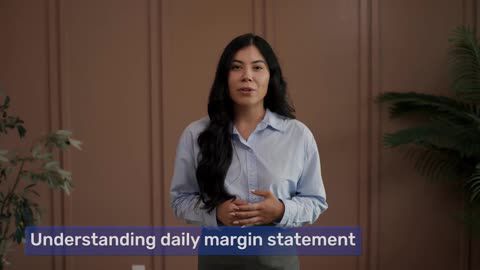Marginal tax relief ensures taxpayers do not end up paying more tax than the additional income they earn beyond a specific threshold. With the Union Budget 2025 introducing key updates, understanding marginal relief is crucial for taxpayers aiming to optimise their financial planning. This article delves into the concept, mechanics, and benefits of marginal tax relief while highlighting its implications under the new tax regime.
Marginal Relief in Income Tax
Marginal relief under Section 87A helps people earning between ₹12L–₹12.75L by making sure they don’t pay more tax than the extra income they earned.
Introduction
What is Marginal Tax Relief?
Marginal tax relief is a provision designed to ensure that taxpayers do not face disproportionate tax liabilities when their income slightly exceeds a prescribed threshold. Under the new tax regime, this relief plays a pivotal role in maintaining fairness in the tax system.
How Marginal Tax Relief Works?
Understanding how marginal tax relief is calculated can help taxpayers assess their liabilities more effectively.
Calculation mechanics
Marginal tax relief is determined by comparing the additional tax payable due to a surcharge with the excess income earned beyond the threshold. The relief is granted to the extent that the additional tax exceeds the incremental income.
Example across income brackets
- Income slightly above Rs. 50 lakh:
- Suppose an individual earns Rs. 50.2 lakh. The surcharge applicable on income above Rs. 50 lakh results in an additional tax liability of Rs. 60,000. However, the excess income earned is only Rs. 20,000.
- Marginal relief ensures that the tax payable is adjusted, so the individual pays Rs. 20,000 as additional tax instead of Rs. 60,000.
- Income slightly above Rs. 1 crore:
- For an income of Rs. 1.05 crore, the surcharge increases significantly. Marginal relief ensures that the additional tax payable does not exceed the Rs. 5 lakh earned above the Rs. 1 crore threshold.
This approach ensures fairness and prevents taxpayers from being disproportionately taxed.
Find out who holds the title of India’s Highest Tax Payer today.
Union Budget 2025: Key Changes in Income Tax and Marginal Relief
The Union Budget 2025 introduced several updates to the new tax regime, including revisions to marginal relief provisions.
New tax regime updates
The new tax regime now offers taxpayers increased flexibility with revised income slabs and reduced surcharge rates for specific brackets. These changes aim to simplify the tax structure and encourage more taxpayers to adopt the new regime.
Marginal relief under Section 87A
Section 87A of the Income Tax Act provides marginal relief to taxpayers whose income marginally exceeds the threshold for surcharge applicability. The 2025 updates have refined these provisions, ensuring greater clarity and fairness.
For instance, the surcharge for incomes exceeding Rs. 2 crore has been capped at 25%, providing significant relief to high-income earners. This revision aligns with the government’s objective of promoting equitable taxation.
Eligibility Criteria for Marginal Relief
To claim marginal tax relief, taxpayers must meet specific conditions regarding their income and surcharge thresholds.
Income thresholds
- For incomes above Rs. 50 lakh: A surcharge of 10% is applicable, and marginal relief can be claimed if the additional tax exceeds the incremental income.
- For incomes above Rs. 1 crore: A surcharge of 15% applies, with marginal relief ensuring fairness.
- For incomes above Rs. 2 crore: The surcharge is capped at 25%, with marginal relief applicable under specific conditions.
Key considerations
- Taxpayers must calculate their total income, including all sources, to determine eligibility.
- Marginal relief is only applicable if the additional tax liability due to the surcharge exceeds the extra income earned beyond the threshold.
By understanding these criteria, taxpayers can ensure compliance while optimising their tax liabilities.
Phenomenal Impact of Marginal Relief
Marginal tax relief has a significant impact on taxpayers’ financial planning and overall tax burden.
Reducing tax liabilities
By preventing excessive taxation on marginal income increases, marginal relief helps taxpayers retain a larger portion of their earnings. This is particularly beneficial for individuals whose incomes marginally exceed surcharge thresholds.
Promoting financial planning
Taxpayers can leverage marginal relief to plan their finances more effectively. By understanding how marginal relief works, individuals can make informed decisions about investments, savings, and income generation.
Benefits of Marginal Relief for Taxpayers
Marginal tax relief offers several advantages that contribute to a more equitable and efficient tax system.
Key advantages
- Fairness in taxation: Marginal relief ensures that taxpayers are not penalised for earning slightly more than the threshold.
- Encourages income growth: By mitigating excessive tax burdens, marginal relief incentivises individuals to pursue higher earnings without fear of disproportionate taxation.
- Simplifies tax calculations: The provision provides clarity and transparency, enabling taxpayers to assess their liabilities accurately.
Utility for different taxpayer profiles
- Salaried individuals: Marginal relief helps salaried taxpayers optimise their take-home pay by reducing excessive tax burdens.
- Business owners: Entrepreneurs can leverage marginal relief to reinvest savings into their businesses, fostering growth and innovation.
- High-income earners: For individuals in higher income brackets, marginal relief provides significant savings, enhancing their overall financial well-being.
Conclusion
Marginal tax relief is a vital provision under the new tax regime, ensuring fairness and equity in taxation. By understanding its mechanics, eligibility criteria, and benefits, taxpayers can make informed decisions to optimise their financial planning and tax liabilities.
Marginal tax relief is a vital provision under the new tax regime, ensuring fairness and equity in taxation. By understanding its mechanics, eligibility criteria, and benefits, taxpayers can make informed decisions to optimise their financial planning and tax liabilities.
To take control of your financial future. With advanced trading insights and research tools, you can transition from passive learning to active investing in under 15 minutes.
Frequently Asked Questions
Yes, marginal relief can be claimed by individuals whose income slightly exceeds the prescribed surcharge thresholds, provided the additional tax liability surpasses the incremental income earned.
The surcharge is applicable when an individual’s income exceeds Rs. 50 lakh. The rates vary based on income brackets, with higher surcharges for incomes above Rs. 1 crore and Rs. 2 crore.
Under the new tax regime, the maximum surcharge rate has been capped at 25% for incomes exceeding Rs. 2 crore, as per the Union Budget 2025 updates.
More Articles
Related Videos
Bajaj Finserv App for all your financial needs and goals
Download App
Now request money from your friends and family and make instant payments.

- 1. Apply for Loans: Choose from personal, business, gold loans and more
- 2. Transact: Pay utility bills, use UPI, get FASTag and more
- 3. Shop: Buy over 1 million products on No Cost EMI
- 4. Invest: Buy stocks, mutual funds and invest in FD


















